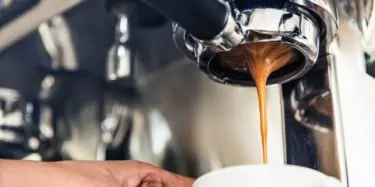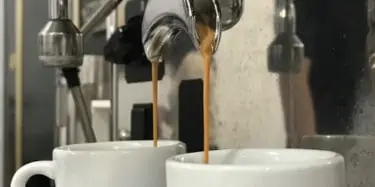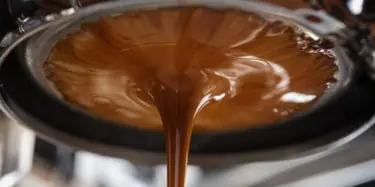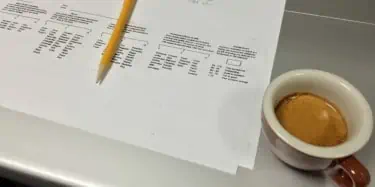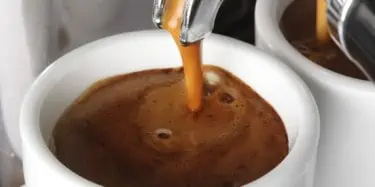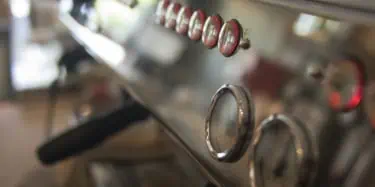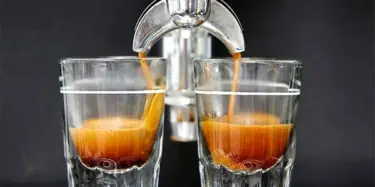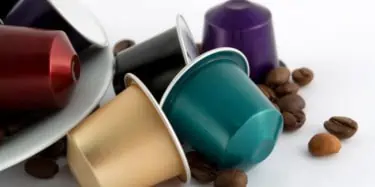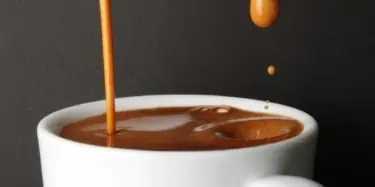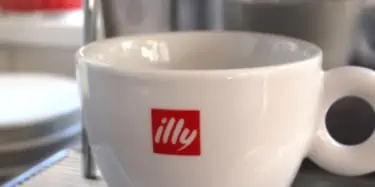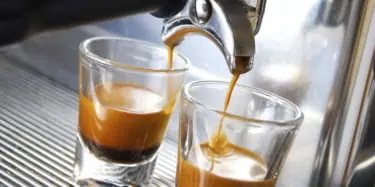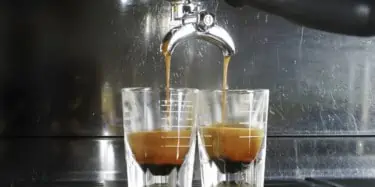What is a single-origin espresso? Very generally defined, it’s an espresso produced from a single crop of coffee grown and processed in a single country, region, cooperative or farm. In other words, it is not a blend of coffees grown in different places or at different times. Single-origin (S.O.) espressos allow an espresso drinker to explore the wider world of coffee in the same mindful,
Tasting Reports – Espressos
Coffee Review has published more than 250 monthly coffee and espresso tasting reports since February 1997. The tasting reports below, focusing on coffees for espresso brewing, appear in reverse chronological order. You may refine your search by using the key word search feature that appears in the page header. The content in tasting reports and associated reviews was correct at the time of publication but may not remain accurate over time.
Darker-Roasted Espresso Blends: Variations On A Classic Theme
Each year, the Coffee Review team publishes an espresso report, for which we invite roasters to submit coffees on a specific theme. In typical years, we partner with an independent lab or roaster here in the San Francisco Bay Area and taste the espressos with at least one outside cupper and a barista or two dialing in and pulling shot after shot. But this year is certainly not typical. The
Exploring “Classic” Espresso Blends: Taiwan Roasters
When we put out our call for classic espresso blends for our June 2019 report, we were not prepared for the overwhelming response: We received 54 samples from roasters based in North America and 46 from roasters based in Asia, all in Taiwan. The magnitude of the response was, perhaps, due to our openness. We had decided not to be prescriptive about what constitutes "classic," but to let roasters
Exploring “Classic” Espresso Blends: North American Roasters
Once a year, we ask roasters to submit coffees roasted for espresso for a special tasting with an outside lab partner, always focused around a specific theme. In recent years, we've covered natural-process and single-origin espresso from the Americas; in 2015, we reported on "open-source" espresso blends, documenting the growing trend of openly revealing blend components to consumers, rather than
Natural-Process Espressos: Fruit and Chocolate Exalted
I recently led a tasting of fine coffees at a consumer event. Only one of these coffees was natural-processed, i.e., had been prepared at the mill by drying the coffee seeds or beans inside the whole fruit. The other samples were all washed coffees, processed by drying the beans after the fruit skin and flesh had been removed. The washed method is the traditional norm for fine coffee in most
New-World Espressos: Single-Origin Espressos from the Americas
We were not sure what to expect when we scheduled this month’s tasting of single-origin espressos from coffees grown in the New World (meaning coffees from the Americas rather than from Africa or the Pacific). Would we receive a run of light-roasted, brightly acidy, perhaps sharp espressos of the style that seems to have become fashionable over the past few years among some smaller, leading-edge
Open Source Espresso Blends
With this espresso tasting we focus on what appears to be a new trend in espresso blending – the open disclosure to customer and competitor of the identity of the specific green coffees that compose a blend, as opposed to the deliberate secrecy around blending that has prevailed in the coffee industry for decades. The old approach to blending implied secret mastery of arcane coffee knowledge that
Lighter and Brighter: Single-Origin Espressos
Coffees from a single farm or cooperative roasted for espresso preparation – aka “single-origin” or simply “SO” espressos – are now a familiar presence on high-end coffee menus and counters in North America, and in many East Asian countries as well. But it was not so long ago that the argument ran that a single coffee from a single origin would always be too limited in its sensory properties to
Single-Origin Espressos
The practice of roasting a coffee from a single farm or cooperative for espresso brewing is a tactic that appears to be carrying the day at the higher end of the North American specialty coffee world. The old argument against single-origin espressos and in favor of blends ran: Put a single, unblended coffee under the magnifying intensity of espresso brewing and the coffee is liable to come out
Tall-Drink Espressos: Best Blends for Big Milk
One old-time coffee generalization certainly got shot down by this month’s reviews: the notion that the way to get pronounced espresso flavor in large (i.e. caffè latte-sized) volumes of hot milk is to roast the hell out of the coffees. The idea used to be that the burned pungency of darker roasted coffees would cut through the sweetening, muffling impact of the milk better than medium roasts,
American Espresso Blends: Boutique and Bigger
Specialty espresso is currently in the throes of a creative explosion. I think of it as "post-Italian" espresso, a dynamic community of baristas, blender/roasters and motivated aficionados remaking espresso as a global connoisseur's beverage with passionately contested barista competitions, non-traditional brewing innovations, and freshly conceived blend designs. The goal of this month's
Convenience First: Espresso Pods and Capsules
It is no surprise that over the last decade the more moneyed elements of the coffee industry have been trying to figure out how to simplify espresso brewing to the point that a consumer can produce a properly rich, smooth-tasting espresso shot without struggling through a complicated process that can be as daunting as upgrading to Vista or assembling a glass-fronted display case from Ikea. Given
Single-Origin Espressos 2008
Those new to espresso connoisseurship may be surprised to learn that producing this dense, aromatic beverage from coffee of a single origin rather than from a blend of coffees from different origins is a mildly controversial practice. Traditionalists argue that the espresso system extracts flavor-bearing components from coffee so efficiently that a single coffee from a single origin is not
Italy Seen from America: Nine (Genuine) Italian and Three American Espressos
Italians must both wonder and cringe when they observe the amazing globe-trotting journey of espresso, a beverage system so quintessentially (and once so exclusively) Italian. Setting aside the implied stereotype that associates Italian-Americans with gangsters, the scene in an early episode of The Sopranos in which Silvio encounters a Starbucks-style espresso bar for the first time and wants to
Better Than You Think: Decaffeinated Espressos
The term "decaffeinated espresso" gets even more snickers from coffee insiders than do allusions to ordinary decaffeinated coffee. The assumption seems to be that espresso is such a strong intensification of coffee-ness that drinking a decaffeinated version of it is a particularly perverse contradiction. In fact, decaffeination and espresso can be surprisingly well suited to one another. The
Readers’ Choice Espressos
Well, special readers. The majority of the espressos reviewed this month were nominated by the roasting companies that produced them. I assume that a roaster knows what his best products are, so it also may be logical to expect these espressos to impress. Most did. Of the twenty-eight we tasted, nine scored 90 points or better. Here are reviews of some of the highest rated or most
Better than Ever: Boutique Espressos
What's a boutique espresso? How about a coffee designed for espresso brewing produced by a very small roasting company for local customers ranging from neighbors to nearby cafes and kiosks. In my most rigorously Platonic version of this definition, the people doing the roasting are ex-baristas (professional espresso machine operators) who got fed up with brewing someone else's coffee and
Nice Going: Readers’ Choice Espressos
Coffee Review readers appear to have good taste in espressos. Of the fifteen espressos tested for this review, all were nominated by Coffee Review readers. Of those fifteen, seven achieved scores of 90 or over, and two more hovered in the 88/89 range. This success rate is considerably higher than typically achieved when I simply collect samples based on roaster nominations plus a random sweep
Progressive Crema: Organic and Fair-Trade Espresso Blends
Here are three things you need to understand to fully appreciate the achievement embodied in the exceptional espresso blends reviewed this month: First, the espresso brewing system produces its best results from coffees that are balanced but complex. Typically, it takes a minimum of three different coffees, often as many as five, to produce an espresso blend that is both complete enough and
Boutique Espressos
In the 60s we used to talk about instant karma, meaning one minute you're criticizing someone's taste in bellbottoms and the next you're walking into the adjoining room and finding someone else knocking your flower-print shirt. My current episode of foot-in-the-mouth karma took a month, not quite instant, but definitely a quick turnaround from a karmic perspective. Last issue I noted a trend












